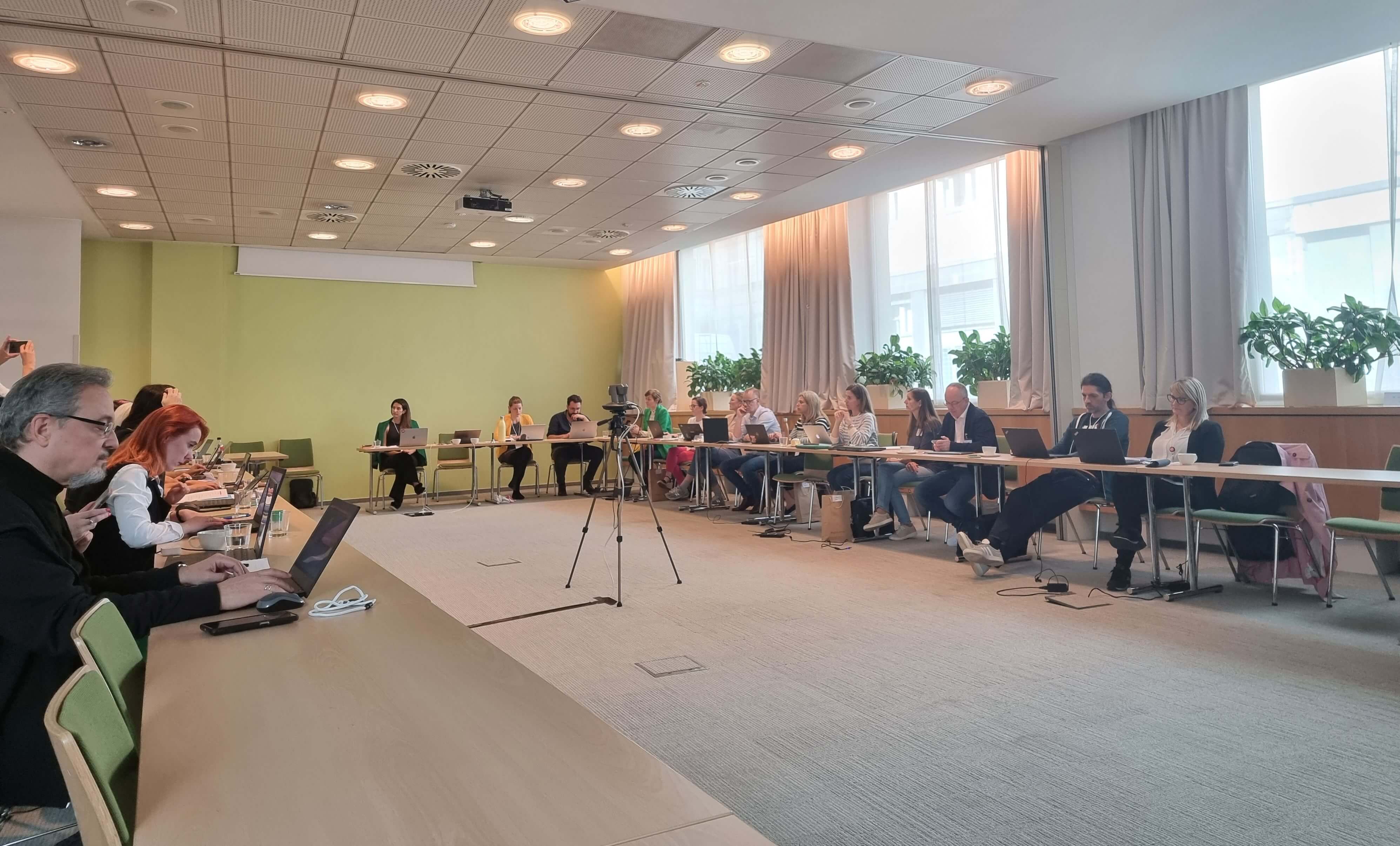My constant goal is: to manufacture something, to create something
Andrej Bagon, technical engineer at Registry .si
I have been interested in computer science since I was a child. We had a printing house at home and around ’85 the first computers started to appear in our office. If I remember correctly, my father was the first in our area to have a 286 – this meant Windows 3.0, CorelDraw 2.0 and a dot matrix printer. This caught my attention and it was in this way that I came across first text programming languages - Basic and Pascal.
My interest and constant pleading made the expected breakthrough – I got my first computer. I finished primary school in the reflection of its black and white screen. But what I remember the most is the computer I got in high school, because it had a color screen. That was a noticeable improvement at the time.
The Gaussian curve also applies to students
Of course, I enrolled in computer high school. I didn’t even think of anything else. I was successful in high school and college, I liked learning – unlike elementary school.
It seemed to me that I was finally learning something interesting and useful. During my studies, I started working for various computer companies. At the end of college, an acquaintance called me and told me that they were looking for a computer science teacher at a computer science high school. So, I started my career as a high school computer science teacher.
During this time, my collaboration with Arnes was already developing. It turned out, however, that I didn’t like working at school too much. I had to devote myself too much to the students, and I was more interested in the technology. Based on my experience, I expected students to be motivated to learn about computers. They did, after all, enroll in computer science high school. The Gaussian curve rule also became obvious – unfortunately, only a few individuals stood out in terms of interest. All of this was too little for me and the path took me elsewhere.
From computing to print and back
I love to create. Anything, really. This is true of my hobbies as well as work. And when I saw the job posting at Arnes for a system engineer, I went for an interview and got the job. I started at system application support.
At that time, I mostly dealt with monitoring systems and disks. I worked mostly scripts to check systems, in Bash and Perl. Towards the end also with Python. There were almost no classical programming languages.
Then, I was temporarily entrusted with the family business of a printer, but then I noticed that they were looking for a new employee at the Registry again and I applied. They took me because they knew my skills and my character from before.
A good engineer knows how to offer good solutions
As for the work of an engineer on the Registry, I would stress that it is very important that you know who to ask what. Clearly, you need technical knowledge – especially Linux, but you must figure out who does what, because the areas are very specific, very different and divided into several sections.
You need to know how to set up an email server, a remote work server, a proxy server, a web server and the like. With all this you must be at home, but at the same time very precise at work – with DNS, EPP and other special services offered by the register. The most interesting thing about all this is that our work is very specific – you can’t find such skills almost anywhere else.
I also believe that a good engineer must be able to offer good solutions – even solutions that the customer does not know he or she needs. Someone wants a button in the app – but this does not mean this button will be the most useful to them. It may be possible to handle the matter in a completely different way, automated and user-friendly, so that it can be upgraded in the future. A good engineer must also be a good consultant.
Driving license for a tractor
I am convinced that the engineer working at the Registry must, above all, have a very broad knowledge. I do very different things myself – even when it comes to my afternoon hobbies. Now, I mostly cycle and run. I used to ski. I practiced skiing for a few years in elementary school. In high school, I also did an exam for a ski teacher. Today, I still most often run on skis on the lawn behind the house. I took the tractor exam in college – it was a pleasure to work the fields with my uncle. I also gained some mechanical knowledge with this. I am also interested in motorcycles and mountaineering.
I like to work on “do-it-yourself” projects – I have set up an amateur meteorological station at home. I have three small children, so something breaks every day. There are scooters, remote control cars, car tracks, airplanes, reading lights, music boxes and other things to be repaired daily.
Preparation and assembly are half the pleasure
What all these hobbies have in common is that there is a technology in the background. Every time you go on the snow, you must prepare the skies, every time you go on the bike, you must inspect it. I assembled all my bikes entirely on my own.
Looking back, I could sum up that the common thread of all this – which includes working at the Registry – is to do something to get some result. Maybe sometimes it’s not even the most important thing to me that the thing works well – but it’s a pleasure to prepare and that I can use the device afterwards. Be it a program code or a set of gears for a bike. Pleasure is not just a goal, but above all a path to get there.




